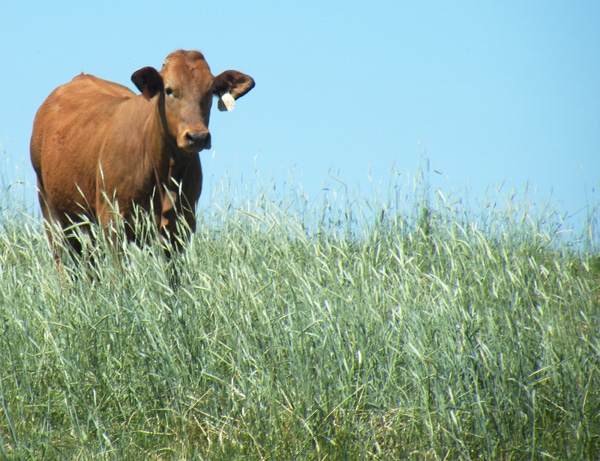August 24, 2011

A gripping drought has many Texas pastures used for cattle production becoming less and less populated with forage. To deter permanent damage to the rangeland, it’s better to take action now rather than later, according to a Texas AgriLife Extension Service forage specialist.
Dr. Larry Redmon, AgriLife Extension state forage specialist, said ranchers should consider the following strategies, which he shared at the Texas A&M Beef Cattle Short Course recently in College Station:
Have a written plan. “You cannot manage what you do not measure,” Redmon said. “Keep good records of your stocking rates and your operation overall. It doesn’t do any good to have a plan if you don’t have records. We look back and see if we’ve made progress. If we haven’t made any progress, then what does that tell us about our plan? It may need to be tweaked or modified a little.”
Stocking rates. Redmon said your grandfather’s cows that weighed 800 pounds aren’t today’s cattle, which may weigh 1,200 pounds. He said to adjust to your current cattle and breed characteristics.
Soil test. “Without a soil test, you over-apply expensive nutrients, under-apply needed nutrients, or never apply the correct level of nutrients.”
Weed management. Redmon advises livestock managers to apply herbicide at the right times of the year to provide better weed management. This can also save money compared to expensive pasture mowing.
Even a moderate infestation of 10 grasshoppers per square meter can consume up to 60 percent of the available forage.
Store hay in a barn. Hay costs about $120 a ton to produce. If you lose 4 inches on the outside, you’ve lost 21 percent of a 6-foot bale.
Don’t guess when it comes to evaluating forages for protein content. He recommends having hay tested for nutritive value. “Overestimating your hay’s nutritive value can severely affect animal performance. Underestimating your hay’s nutritive value can lead to excess supplementation costs.” Nitrate test for all warm season annual grass hays.
Consider alternatives to feeding hay when possible.
Consider alternatives to inorganic fertilizer. Include forage legumes where applicable.
Finally, Redmon advises producers to reduce stocking rates, cull cows and move cattle to leased grazing land when all other avenues have been exhausted.
“You may also need to remove livestock from a pasture and feed stored feed supplement, but this typically is not cost-effective,” he said. “You might also consider having one pasture that is a sacrifice area. In this case, it would be best to choose one pasture or rotate. Feed them in one pasture one week and then feed in another pasture the other week. Also, make sure they always have clean water available.”
These strategies will be discussed in more detail at the upcoming fall Ranch Management University program scheduled Oct. 10-14 at Texas A&M University in College Station. Attendance is limited to the first 50 people who enroll, and the slots are beginning to fill, Redmon said. Cost is $500. For additional information and registration, contact Redmon at979-845-4826 or at [email protected].
To register online and for additional information, go to https://agriliferegister.tamu.edu and type in “ranch management” as key words in the search window.
You May Also Like




